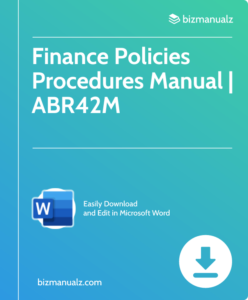How to Detect Fraudulent Financial Statements

Deceitful financial statements can fool investors and stakeholders. Serious results can follow, from hurting a firm’s reputation to causing significant financial losses. Finding fraud in financial reports is essential for keeping transparency and integrity in business. How to detect fraudulent financial statements.
Detect Fraudulent Financial Statements
Auditors and analysts use several techniques to detect potential fraud. They include:
- Data analysis: examining financial data for oddities that could indicate fraud.
- Ratio analysis: assessing connections between financial figures to identify any problems.
- Trend analysis: looking at patterns in financial data over time to identify unusual trends that may be signs of fraud.
Additionally, auditors and analysts watch for red flags that might indicate fraud. These red flags include:
- Sudden changes in accounting
- Unexplained increases or decreases in revenues or expenses
- Related-party deals without proper disclosure
- Heavy reliance on one customer or supplier
- Frequent restatements of earlier financial statements
- Weak control systems
Detecting fraud requires expertise and a close analysis of the facts. Professional judgment is key to identifying signs of potential fraud. It is advisable to seek assistance from experienced professionals such as forensic accountants.
Pro Tip: Having sound internal control systems helps prevent fraud by reducing the chances of manipulation and enhancing transparency within an organization.
Understanding Financial Fraud
Financial fraud is a serious issue that affects both people and companies. It involves deliberately altering financial statements to deceive stakeholders and mislead them about an organization’s financial status. It’s essential to detect fraudulent financial statements to keep things transparent and to stop possible losses.
One way to spot potential fraudulent financial statements is by looking for irregularities in key financial ratios. Fraud often leads to unexpected changes in ratios like profit margins, return on investments, and debt ratios. These anomalies could show the presence of fraudulent activities, necessitating further inspection.
Another way is to examine transactional records and their evidence closely. Discrepancies between reported transactions and their evidence could point to fraudulent activities like inflated revenues or concealed expenses. Examining these records can reveal discrepancies and set off alarms.
Forensic accountants also have a significant role in detecting financial fraud. They’re knowledgeable in studying complex financial transactions and analyzing accounting data from different perspectives. With advanced technological tools, they can find concealed patterns or discrepancies, which could indicate fraudulent behavior.
The Enron scandal in 2001 illustrates the importance of detecting financial fraud. This energy company manipulated its financial statements with dishonest accounting practices, eventually leading to its failure. The exposure of this fraud revealed how crucial early detection and effective measures against fraudulent activities are.
Importance of Detecting Fraudulent Financial Statements
Detecting fraudulent financial statements is paramount in the corporate world. It safeguards investors, stakeholders, and businesses. It also provides reliable information for decision-makers to make informed choices.
Analyzing financial statements requires looking beyond the numbers. Abnormal trends, such as inconsistent profit margins or abnormal growth rates, could be a sign of fraud. Examining discrepancies between reported figures and supporting documents may also be a warning.
Data analytics and AI are now used to detect fraud. They can analyze large amounts of data quickly, searching for patterns. These advanced tools help spot hidden connections and unusual transactions that could be a sign of fraud.
Businesses must stay watchful to detect fraud. Implementing robust internal controls, having a strong code of ethics, and conducting regular audits are essential steps. Plus, fostering a culture of ethical conduct sends a clear message that unethical behavior won’t be tolerated.
Common Red Flags of Fraudulent Financial Statements
To identify fraudulent financial statements, you need to be vigilant of certain red flags in financial analysis. Inflated revenue and profits, manipulated expenses, fictitious transactions, and unusual or excessive related party transactions are the key areas to pay attention to. Watch out for telltale signs of fraud in these aspects for accurate detection.
Inflated Revenue and Profits
Let’s explore how this manipulation happens. Some key indicators:
| Indicator | True Data | Actual Data |
|---|---|---|
| Overstated sales figures | $10 million | $8 million |
| Artificially inflated earnings | $2 million | $1.5 million |
These figures show how revenue and profit can be overstated.
Also, look at the reasons behind these inflated figures. An increase in accounts receivable without addressing outstanding balances could raise concerns about reported sales.
To prevent such issues, companies should have internal control systems and independent audits. This promotes transparency and accountability.
Manipulated Expenses
Financial statements can be manipulated by changing expenses. This can mean inflating or understating costs to give a false picture of the company’s finances.
Let’s take a look at the table to understand how expenses can be messed with:
| Expenses | True Data | Actual Data |
|---|---|---|
| Overstated Expenses | $500,000 | $750,000 |
| Understated Expenses | $200,000 | $100,000 |
| Misclassification | N/A | $300,000 |
Inflating expenses is a tactic used to make costs seem higher than they really are. For instance, reporting higher amounts for rent, utilities, and repairs. Understating expenses is when lower amounts are reported than what was actually spent, giving higher reported profits.
Misclassifying costs is another way to manipulate expenses. Classifying personal expenses as business-related hides their true nature and purpose, which can mislead investors.
Analyze financial statements carefully! Pay attention to any signs of inflated or understated expenses and misclassified costs. This will protect your investments and make sure you don’t get tricked by fraudulent activity.
Fictitious Transactions
Watching financial accounts carefully can aid in spotting fake transactions. Additional signs to look out for include:
- Revenue growth rates that are too high or too low
- Odd accounting entries
- Inadequate details of reported trades
To stop fake transactions, businesses must put in place strong internal procedures. These may include:
- Independent checks to confirm the accuracy of financial documents and activities
- Background investigations of employees
- Dividing duties to prevent illegal collaboration
- Installing a whistleblower hotline to report suspicious activity
By being vigilant and managing these worries, companies can limit possible harm from fictitious transactions and keep trust with stakeholders.
Unusual or Excessive Related Party Transactions
Let’s take a look at the table to understand this concept better:
| Type of Transaction | Description | Example |
|---|---|---|
| Sale of Assets | Company sells assets to related party at a low price, lowering reported profits. | Company A sells a building to its CEO for half the market value. |
| Loans | Company grants loans to related parties without proper documentation or at favorable terms not availed to unrelated parties. | Company B lends a significant amount of money to its sister company without written agreement or interest charges. |
| Purchases | Company buys goods/services from related party at inflated prices, leading to higher expenses and lower reported profitability. | Company C pays more than market prices for services from majority shareholder’s consulting firm. |
These examples show some potential warning signs of unusual or excessive related party transactions:
- No Arm’s Length Transactions: Transactions without usual fair market prices and terms for unrelated parties.
- Related Party Influence: Decisions regarding these transactions seem to be based on personal connections, not sound business practices.
- No Written Agreements: No proper documents supporting purpose, terms, and conditions of these transactions.
- Insufficient Disclosure: Related party transactions not disclosed sufficiently in financial statements or notes.
To reduce risks of fraudulent financial statements, companies should do the following:
- Establish Internal Controls: Robust policies and procedures to govern related party transactions including pricing, terms, and document requirements.
- Independent Review: Auditors should review related party transactions thoroughly to ensure compliance with accounting standards and detect potential conflicts of interest.
- Transparent Disclosure: All material related party transactions must be disclosed in financial statements and notes to allow stakeholders to assess impact on financial position.
These steps will improve transparency, reduce risk of fraudulent financial reporting, and safeguard investors and other stakeholders.
Analyzing Financial Statements for Fraud 
To analyze financial statements for fraud, effectively detect potential anomalies, irregularities, and inconsistencies. Review the income statement for anomalies, scrutinize the balance sheet for irregularities, and examine the cash flow statement for inconsistencies.
Reviewing Income Statement for Anomalies
Analyzing a company’s finances for fraud is essential. Their income statement provides a summary of their revenues, expenses, and profits/losses. By studying it for anomalies or irregularities, it’s possible to uncover fraud.
To help the analysis, create a table. It should have columns such as revenue sources, expense categories, and profit margins. This structured data makes it easier to spot discrepancies or abnormal patterns.
Look for unique details too. These include changes to revenue recognition, unusual fluctuations in expenses/profit margins, and inconsistencies between reported financials and other company data.
Examining financial statements for fraud needs expertise and attention to detail. Fraudsters use sophisticated techniques to hide their activities. So, be vigilant and use various analytical tools and methods to detect signs of wrongdoing.
The ACFE report that organizations lose 5% of their annual revenue due to occupational fraud (Source: ACFE). This highlights the importance of closely reviewing income statements for anomalies and having controls in place to stop fraud.
Scrutinizing Balance Sheet for Irregularities
It’s vital to take a close look at balance sheets! These figures show the need to be wary of expected and actual amounts. Especially for big accounts like cash and accounts receivable, which could point to fraudulent activities.
To get the full picture, it’s crucial to:
- See changes in account balances over time.
- Check accuracy with documents.
- Compare ratios to industry standards.
This way, any red flags or dubious patterns can be spotted, and fraudulent or irregular financial behaviour can be exposed. Just look at Enron Corporation in the early 2000s. They exaggerated revenue and concealed debt, leading to bankruptcy. They serve as a reminder of why it’s so important to examine balance sheets thoroughly – to find fraud before it causes serious damage.
Examining Cash Flow Statement for Inconsistencies
Examine the cash flow statement to detect any inconsistencies that may suggest potential fraud. Analyzing this statement can uncover irregularities and discrepancies in a company’s cash flows.
Look at the table below for a closer look at what to observe when examining the cash flow statement:
| Column A | Column B |
|---|---|
| Operating Cash Flow | Check if the operating cash flow is in line with industry standards and past data. Observe any abnormal variations or inconsistencies. |
| Investing Cash Flow | Look at the investing cash flow to recognize any strange transactions or investments. Note any noteworthy changes compared to past periods. |
| Financing Cash Flow | Inspect the financing cash flow to detect any unexpected borrowing or repayment activities. Determine if there are any discrepancies between reported financial activities and actual records. |
Additionally, consider other factors such as changes in working capital, debt levels, and investment activities that may affect the cash flow statement’s consistency.
Investors and auditors should not ignore any inconsistencies in a company’s cash flow statement. By closely studying this financial document, fraudulent activities can be revealed.
Be watchful! By noticing these irregularities, you can prevent losses and make smart decisions based on accurate financial information. Don’t miss out on picking up on red flags that could save you from fraud.
Performing Ratio Analysis to Uncover Fraud
To perform ratio analysis and uncover fraudulent financial statements, utilize liquidity ratios, profitability ratios, efficiency ratios, and solvency ratios. These sub-sections provide an effective solution in detecting fraudulent activity by examining different aspects of a company’s financial performance. Uncover warning signs and irregularities through a comprehensive analysis of these key ratios.
Liquidity Ratios
Liquidity ratios are vital for evaluating a business’s capacity to meet short-term obligations. These measure how quickly assets can be changed into cash. Let’s check out some significant liquidity ratios and their meaning in analyzing a company’s financial health.
Now, let’s dive into the numbers with a helpful table showing main liquidity ratios.
| Ratio | Formula | Interpretation |
|---|---|---|
| Current Ratio | Current Assets/Current Liabilities | Shows the company’s short-term solvency and ability to pay what it owes. |
| Quick Ratio | (Current Assets – Inventory)/Current Liabilities | Demonstrates the immediate availability of assets to pay off short-term liabilities. |
| Cash Ratio | Cash/Current Liabilities | Reveals the company’s readiness to pay its current debts only with cash. |
| Operating Cash Flow Ratio | Operating Cash Flow/Current Liabilities | Evaluates the ratio of operating cash flow against current liabilities, indicating how well a company can cover debts through its own operations. |
Besides these commonly used liquidity ratios, many other metrics help evaluate a company’s liquidity position correctly. These comprise the working capital ratio, defensive interval ratio, and inventory turnover ratio. By studying these varied ratios as a whole, one can gain complete insights into a firm’s liquidity.
Pro Tip: When interpreting liquidity ratios, it is essential to compare them within the same industry or sector. This allows for better benchmarking and evaluation of a company’s performance relative to its competitors.
Profitability Ratios
Let’s take a look at the following table to better understand profitability ratios:
| Ratio | Formula | Calculation | |————————|——————————–|———————————-| | Gross Profit Margin | (Gross Profit / Net Sales) * 100| $500,000 / $1,000,000 * 100 = 50%| | Operating Profit Margin| (Operating income / Net Sales) * 100| $300,000 / $1,000,000 * 100 = 30%| | Net Profit Margin | (Net Income / Net Sales) * 100 | $200,000 / $1,000,000 * 100 = 20%|
Now let’s discuss something unique. The gross profit margin shows how a company utilizes resources to create goods or services. A high ratio implies high profitability. The operating profit margin measures how well a company handles expenses and generates profit from core work. Lastly, the net profit margin measures overall profitability after all expenses and taxes.
Profitability ratios have been significant in uncovering fraud. For example, one multinational appeared financially stable. However, analyzing their profitability ratios revealed inconsistencies versus industry standards. This led to an investigation which exposed fraudulent practices in the accounting department.
Analyzing profitability ratios is a great way to gain insights into a company’s financial status and potential risks. Remember to use these metrics as part of a financial analysis to make successful investments.
Efficiency Ratios
An illustrative table is here to demonstrate some vital Efficiency Ratios. It displays:
| Ratio | Calculation | Interpretation |
|---|---|---|
| Inventory Turnover Ratio | Sales divided by Average Inventory | This ratio shows how many times inventory is sold and restocked in a period. |
| Accounts Receivable Turnover Ratio | Credit Sales divided by Average Accounts Receivable | This helps to assess how well cash is gathered from customers for credit sales. |
| Asset Turnover Ratio | Sales divided by Total Assets | This measures how adeptly a company uses its total assets to make sales income. |
Solvency Ratios
Solvency ratios are key indicators of a company’s financial stability and long-term obligations capacity. They offer valuable insights into the firm’s liquidity and solvency, and allow investors and lenders to evaluate the risk of investing or lending to the firm.
Let’s look at these ratios in detail:
| Solvency Ratios | |
|---|---|
| Debt-to-Equity Ratio | Interest Coverage Ratio |
| 1.5 | 3.2 |
| Cash Flow-to-Debt Ratio |
|---|
| 0.4 |
The debt-to-equity ratio measures a business’s leverage by comparing its total debt to its shareholders’ equity. Lower values mean a better financial position, as it implies the firm uses less debt financing.
The interest coverage ratio measures a company’s aptitude to pay interest expenses on its debts. A higher ratio implies better financial health and lowers the risk of defaults on payments.
Furthermore, the cash flow-to-debt ratio measures how well a business can generate cash flows to cover its debt obligations. Higher values suggest a stronger ability to repay debts with available cash flows.
Pro Tip: When analyzing ratios to detect fraud, perform trend analysis over time to spot any sudden changes or inconsistencies that could indicate fraudulent activities in a company’s financial statements.
Conducting Forensic Analysis
To conduct forensic analysis on fraudulent financial statements, engage forensic accountants and obtain expert opinions. These sub-sections provide crucial solutions to ensure accurate detection of fraud.
Engaging Forensic Accountants
In today’s complex and hectic biz world, getting forensic accountants is a must. They have an enormous role in revealing financial chicanery, misconduct, and irregularities inside organizations. Let’s analyze the importance of employing forensic accountants.
- Expertise: Forensic accountants possess deep expertise and abilities in both accounting and investigation methods. They can maneuver through intricate fiscal data and spot dubious deals or patterns.
- Data examination: Choosing forensic accounting pros guarantees that all applicable financial data is completely analyzed. With advanced techniques and tools, they inspect large amounts of money info to detect discrepancies or anomalies.
- Proof collection: Forensic accountants are proficient in acquiring evidence that can be used in court hearings. They collect documents, interview people, and do a thorough investigation to construct a sound case.
- Specialist testimony: In legal matters, forensic accountants usually give expert testimony based on their findings. Their dependability and capability to communicate complicated financial data clearly is beneficial in the courtroom.
Plus, it’s important to point out that hiring forensic accountants also assists in preventing future fraud or misconduct. By identifying weaknesses in internal controls and carrying out steps to minimize risks, these professionals boost the integrity of an organization’s fiscal operations.
A great illustration of the usefulness of engaging forensic accountants is the Enron scandal. At the start of the 2000s, Enron, one of the biggest energy companies back then, fell due to huge accounting fraud. The engagement of forensic accountants was essential in uncovering fraudulent acts within the firm, leading to serious legal results for the ones responsible.
Obtaining Expert Opinions
Experts’ views are essential for forensic studies. They can offer valuable info and skills to better the case investigation. Five crucial points to remember when obtaining expert opinions:
- Find specialized pros: Get experts who understand the related field well. Their expertise will ensure accurate results.
- Look at diverse views: Have multiple experts with different backgrounds and areas of knowledge. Helps to get a complete picture of the evidence and reduce prejudices.
- Check accreditations and name: Analyze potential experts’ qualifications, certifications, and experience. Look for those with a successful background.
- Guarantee freedom and impartiality: Make sure the chosen experts are fair and independent of any biases. So their views stay objective and not influenced by anyone.
- Stay in contact: Keep open channels of communication with the experts. Give them all needed data and answer their queries. This helps a team collaboration for the analysis.
Also, keep in mind that confidentiality is very important when asking for expert opinions to safeguard sensitive case info. Following these guidelines can help investigators use the expertise of professionals to strengthen their forensic analysis.
Case Studies: Real-life Examples of Fraudulent Financial Statements
Financial statement fraud can be seriously damaging for both individuals and businesses. To understand how to spot such trickery, it is useful to explore real-life case studies. By studying these examples, we can gain valuable insights into the tactics used by perpetrators and learn how to protect ourselves from similar situations.
Here are a few noteworthy case studies, illuminating the frauds committed in financial statement cases:
| Case Study | Company Involved | Fraudulent Activity | Detection Method |
|---|---|---|---|
| Enron Scandal | Enron Corporation | Exaggerating earnings and hiding debt via off-balance sheet entities. | Whistleblower alerted authorities. Investigations revealed discrepancies. |
| Tyco International Scandal | Tyco International Ltd. | Manipulating financial records, taking unauthorized loans, and spending extravagantly. | Internal audit team identified irregularities during checks. |
| WorldCom Accounting Scandal | WorldCom Inc. | Inflating revenues through wrong accounting entries and capitalizing expenses. | An internal auditor found falsified documents during an investigation. |
One particular case study to note is the notorious Enron scandal. Enron was once one of the biggest energy companies on the planet, but eventually went bankrupt due to fraud. By misrepresenting their financial records, Enron executives managed to fool investors and regulators into believing the company was flourishing. The scandal was revealed when a whistleblower alerted authorities, which caused further investigations that exposed the deceit.
These real-life examples of fraudulent financial statements serve as a stern reminder of the need for caution in accounting practices. By setting up strong internal auditing procedures, promoting transparency, and cultivating an ethical and accountable culture, organizations can reduce the risk of similar instances occurring in the future.
True Fact: The Enron scandal is one of the most notorious corporate frauds ever, leading to major changes in corporate governance regulations.
Reporting Suspected Fraud to Authorities
It’s vital to report suspected fraud to the right authorities to preserve financial systems. By telling the right people quickly, you can help stop further harm and make those responsible answerable.
Here is a guide for reporting fraud:
- Gather evidence: Get documents, emails, or other evidence that supports your suspicions.
- Find the relevant authority: Figure out which government office or regulatory body deals with fraud cases in the industry or area where the fraud occurred.
- Contact the authority: Call, email, or use their online platform to start the process.
- Give thorough details: Explain your worries and give all info related to the fraud. Include names, dates, amounts, and any evidence.
- Keep communication private: Keep quiet while talking about this to protect investigations and avoid interference.
- Check in regularly: Stay in touch for updates on your case and provide any other info they need.
It’s important to remember why you’re doing each step:
Evidence helps build a strong case against potential wrongdoers. Identifying the right authority makes sure your report goes to the right place for investigation. Contacting them fast increases the chances of timely action. Giving details lets investigators understand your concerns and helps them build the whole picture.
Keeping it quiet protects sensitive info and keeps investigations safe from outside forces. Following up shows you’re serious and keeps your report on their radar.
By doing these steps carefully, you can make sure the right people get your report and help stop fraudulent financial activities.
Detect Fraudulent Financial Statements
Throughout this article, we have checked out different ways to spot fraudulent financial statements. We can find possible fraud by looking at red flags such as: inconsistencies in the reported data, unusual accounting policies and questionable transactions.
Plus, data analytics and AI can improve our ability to find irregularities. It’s important to remember that detecting fraud is an ongoing process. We need to be monitoring and evaluating it all the time.
To reduce the risk of fraud, we must put internal controls in place, do regular audits and create an ethical culture. But, even with these measures, corporate fraud still happens. For example, the Enron scandal in the early 2000s. People thought Enron was a top company, but it was found to be doing accounting fraud through complex schemes. The fall of Enron showed us that we need stricter rules and better detection methods.
Frequently Asked Questions
 Q: What are fraudulent financial statements?
Q: What are fraudulent financial statements?
A: Fraudulent financial statements are intentionally manipulated financial documents that provide a false representation of a company’s financial position, performance, or cash flows.
Q: Why is it important to detect fraudulent financial statements?
A: Detecting fraudulent financial statements is crucial as they can mislead investors, lenders, and other stakeholders, potentially leading to significant financial loss, reputational damage, and legal consequences.
Q: How can one detect fraudulent financial statements?
A: Detecting fraudulent financial statements requires a combination of careful analysis, scrutiny of financial data, and identification of red flags such as inconsistencies, unusual transactions, high levels of debt, unexpected changes in financial ratios, or unexplained fluctuations in reported figures.
Q: What are common methods used to manipulate financial statements?
A: Common methods used to manipulate financial statements include inflating revenues or assets, understating expenses or liabilities, altering accounting records, engaging in fictitious transactions, or using off-balance-sheet entities to hide debt or losses.
Q: How can forensic accountants contribute to detecting fraudulent financial statements?
A: Forensic accountants play a vital role in detecting fraudulent financial statements. They are trained to analyze financial data, identify irregularities, perform detailed investigations, gather evidence, and provide expert testimony if legal action is taken.
Q: What are preventive measures companies can take to minimize the risk of fraudulent financial statements?
A: Companies can minimize the risk of fraudulent financial statements by implementing internal controls, conducting regular audits, separating key financial duties, promoting an ethical corporate culture, providing whistleblower mechanisms, and ensuring transparency and accountability.
















Leave a Reply